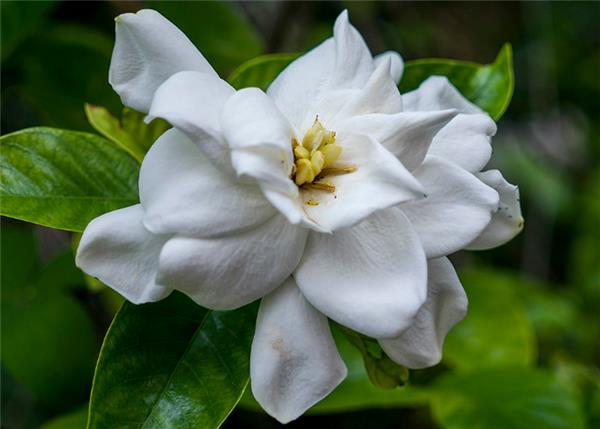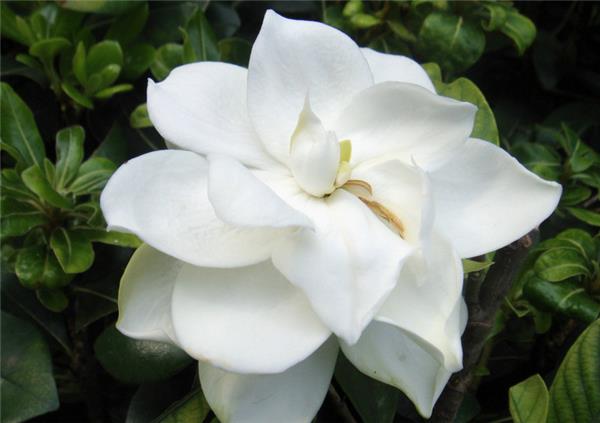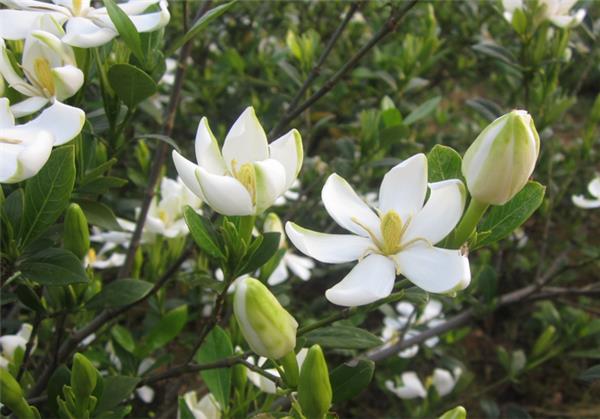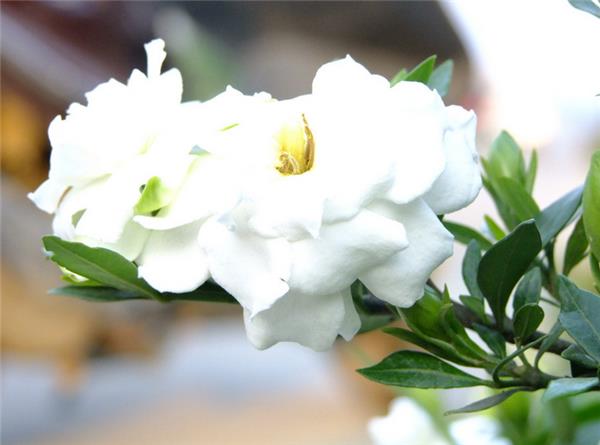How to grow gardenia indoors
How to grow gardenia indoors? For domestic gardenia, it is necessary to master its physiological characteristics in order to make leaves, flowers and fruits beautiful and improve the ornamental value.

How to grow gardenia indoors
1. Choose suitable basin soil.
Gardenia likes acidic soil, and the suitable pH value is 5 to 6. Prepare suitable soil before planting. If the pH of the soil is not suitable, the maintenance after that is very troublesome.
Cultivation soil usually choose rotten leaf soil, peat soil plus half of the garden soil, do not use cinder, or directly buy gentleman orchid special soil, convenient and practical.
2. Rational fertilization
Gardenia likes fertilizer, and rotten cake fertilizer is added to the soil as base fertilizer when planting.
Cake fertilizer and ferrous sulfate are used to make fertilizer and water in the growing season and irrigated once a week. Fully nutritious organic liquid fertilizer can also be used.
Topdressing for 1-2 times at budding stage and watering the aqueous solution of potassium dihydrogen phosphate can make the flowers fat and fragrant.
The temperature is above 35 ℃ in summer and 15 ℃ in autumn, and fertilizer application is stopped.

3. Scientific watering
Gardenia likes a moist environment. During the growing period from April to September, keep the basin soil moist, water dry and wet, and spray the leaves at night to maintain humidity. If the plant grows too fast, don't water it at night. Water it when the sun comes out in the morning.
In the northern Gushui area, when watering, the tap water will be watered after a day. For 3-5 days, pour a little citric acid solution to keep the leaves green.
4. Bask in the sun
The growth of gardenia needs plenty of sunlight, if placed in the semi-shade for a long time, the flower branches are thin and slender. During maintenance, in addition to 7 stroke 8 and noon need shade and winter hibernation, the rest of the time can be maintained in the sun.
5. Good dormancy in winter
Although gardenia is cold-tolerant, the root system of potted gardenia will be damaged after severe winter and recover slowly in spring. But in the room with heating, the temperature is higher, the light is insufficient, the plant growth slows down, and the flowering is later in the second year. The best way is to put the potted plant in a 5 ℃ environment to hibernate, or wrap the flowerpot with thermal insulation material and put it outside in the sunny leeward to survive the winter.

6. Proper pruning
When the trunk of Gardenia jasminoides grows to 20 cm, hit the top, leaving 3-4 branches to promote branches. After flowering every year, prune lightly and cut off weak and diseased branches. But gardenia can not be cut short in spring, otherwise it will be difficult to blossom in that year.
7. Change the basin soil at the right time
The vitality of Gardenia jasminoides is exuberant, and the seedlings grow from a few meters to dozens of meters, so the pot should be changed according to the size of the plant. When the branch length of the plant is 2 to 3 times the diameter of the flowerpot, the pot needs to be changed. When changing the basin, you should trim the old roots in time, change half of the soil, pour water through, put it in the semi-shade for a week, grow new buds and move to the sun.

Matters needing attention in Gardenia Culture
Gardenia is often prone to yellowing of leaves, which is caused by a variety of reasons, so different measures should be taken to prevent and cure it. Chlorosis caused by lack of fertilizer: this chlorosis starts from the old leaves in the lower part of the plant and gradually spreads to the new leaves. Nitrogen deficiency: simple yellow leaves, new leaves small and brittle. Potassium deficiency: old leaves change from green to brown. Phosphorus deficiency: old leaves are purplish red or dark red. For the above cases, rotten human feces and urine or cake fertilizer can be forced to apply. Chlorosis caused by iron deficiency: this yellowing disease occurs on new leaves. At first, the leaves are yellowish or white, the veins are still green, and in severe cases, the veins are yellow or white, and eventually the leaves will dry up and die. To this kind of situation, can spray 0.2% Mel 0.5% ferrous sulfate solution to prevent and cure. Chlorosis caused by magnesium deficiency: this yellowing disease begins to develop from old leaves to new leaves, and the veins are still green. In severe cases, the leaves fall off and die. For this situation, 0.7% Mel 0.8% boron and magnesium fertilizer can be sprayed to prevent and control. Excessive watering, freezing and so on will also cause the phenomenon of yellow leaves, so special attention should be paid to it in the process of maintenance.
Related
- Wuhan Hospital Iron Tree Blooming Result Was Instantly Frightened by the Gardener Master
- Which variety of camellia is the most fragrant and best? Which one do you like best?
- What is the small blue coat, the breeding methods and matters needing attention of the succulent plant
- Dormancy time and maintenance management of succulent plants during dormancy
- Minas succulent how to raise, Minas succulent plant pictures
- What are the varieties of winter succulent plants
- How to raise succulent plants in twelve rolls? let's take a look at some experience of breeding twelve rolls.
- Attention should be paid to water control for succulent plants during dormant period (winter and summer)
- Watering experience of twelve rolls of succulent plants
- Techniques for fertilizing succulent plants. An article will let you know how to fertilize succulent plants.



